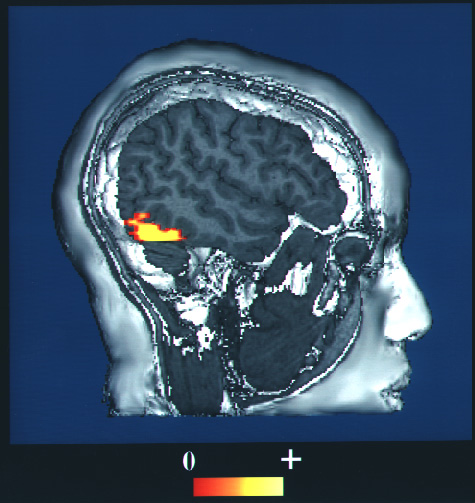Wednesday, 30 September 2020
The expertise account, or, why the brain’s face-recognition area can be activated by the sight of a chessboard

In a 2017 article on the chess website chessable, entitled “Beating Magnus after a month of training: the neuroscience of why learning chess is so much harder than learning a language”, author David Karmaley writes: “A fascinating finding from neuroscience is that your brain starts using the fusiform face area to store chess positions! This is the part of the brain usually responsible for human face recognition.”
Karmaley seems surprised that a part of the brain associated with face recognition is also used to recognize the positions of pieces on a chessboard, and at first glance, the connection may seem puzzling. But a theory known as the expertise account offers a highly plausible explanation.
The fusiform face area (FFA) was first described in 1992 and given this name in 1997 by cognitive neuroscientist Nancy Kanwisher and her team. Kanwisher observed that this ventral area of the temporal cortex was strongly activated when someone saw a familiar face. Kanwisher saw this observation as strong evidence that the brain contains modules that specialize in particular functions—in this case, in the visual system. Subsequently, numerous brain-imaging studies showed that although this part of the brain generally responded more to human faces than to any other stimulus, in some people it was also activated in very different situations, such as when they saw images of birds or cars. Interestingly, the people whose FFAs responded to bird images were ornithologists, and those whose FFAs responded to images of cars were automobile enthusiasts.
These findings led neuroscientist Isabel Gauthier and other researchers to formulate the expertise account for the behaviour of this part of the brain. According to this account, the reason that the FFA responds to faces is not that it specializes in facial recognition, but rather that all humans acquire expertise in recognizing the patterns formed by human faces, because they are so important in human interactions. And when people become experts in recognizing birds or automobiles, for example, their FFAs also become important nodes in a brain network that facilitates rapid categorization of these items with which they have become so familiar.
Other studies have led further weight to the expertise account—for example, one study showed strong activation of the FFA in radiologists examining X-ray images that bore no resemblance whatever to human faces, while others showed such activation in response to other patterns that were nothing like human faces, such as the positions of the pieces on a chessboard. In a 2011 experiment, Merim Bilalić and his team showed that in chess experts, the FFA became activated not only when they observed chess pieces arranged in game situations, but even when they observed such pieces distributed randomly on the board. The researchers concluded that highly familiar visual inputs, in this case composed of numerous elements, triggered a form of automatic processing that was specific to this type of stimulus, and that the FFA was an important node in the brain network that carried this processing out.
Further studies have begun to show that the FFA and the adjacent areas of the lower temporal lobe are in fact composed of different neuron clusters on a finer spatial scale, and that these clusters perform distinct specialized functions. The adventure of functional brain mapping, with the help of ever-more-powerful brain imaging devices, is a never-ending story.
From the Simple to the Complex, From Thought to Language | Comments Closed








